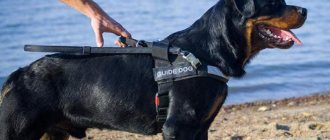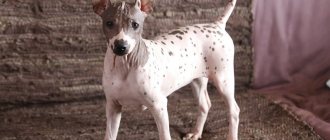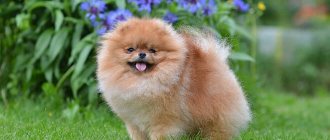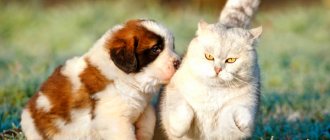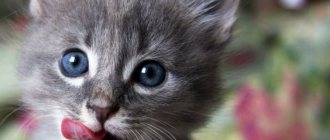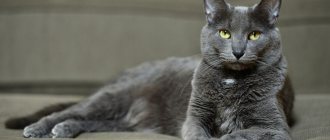Main characteristics
| Breed parameters | |
| Country of origin: | Germany |
| Weight of the breed: | 45–50 kg |
| Height at withers: | 65–70 cm |
| Temperament: | active |
| Wool: | short |
| Role in human life: | companion |
Pets are very memorable for their characteristic appearance: their attractive black color, impressive size, short hair, calm expression in the eyes, powerful and strong muscles attract the eye. The tandem of a Rottweiler and an experienced dog breeder will be very successful.
Description of the Rottweiler breed
Sheltie (dog): characteristics of the shepherd breed
What does the Rottweiler breed look like? In the dog world, he can be called a real athlete. Such power and beauty sinks into the soul of many. The weight of an adult male is about 50 kg, and a female is at least 40 kg. The dog's skull is of medium size with a convex forehead and developed cheekbones. A bump is clearly visible on the back of the head. The muzzle is evenly shaped and wide at the base, tapering towards the nose. A white Rottweiler dog, a miniature Rottweiler dog, or a mini Rottweiler dog will be slightly different from the standard.
The nose is black with wide nostrils. The jaw is powerful and of good width. The teeth are strong and have good strength. The ideal number is 42 teeth. The eyes are almond-shaped, small in size, and the eyelids fit tightly to the eye. The reference color for a dog's eyes is brown, especially for the black Rottweiler variety. The Rottweiler's gaze is bold and open, without a hint of aggression.
Rottweiler muzzle
The ears are small, triangular in shape, and droop slightly. The neck is not very long, but strong and powerful. At the top the neck bends slightly. The front and hind limbs of the Ratveril dog are strong, even, and fit well to the chest. The hind legs are much longer than the front legs and this is clearly visible visually.
Important! Albinos are extremely rare among representatives of this breed and this coloring is considered a defect.
Origin
The story begins with the ancient ancestors of the Rottweiler, who were Molossians - strong and angry dogs that came to Germany during the reign of the Roman emperors. They guarded and herded the herds. Representatives of the breed are named after the city of Rottweil in the southwestern part of Germany. During the Middle Ages, it was a center of lively trade, located at the intersection of trade routes, and was famous for its large markets. To protect meat convoys from thieves, these four-legged guards were actively used. Moreover, they were not just watchmen, but also carriers: they were harnessed to carts loaded with tenderloin or steaks.
The degeneration of pets came at a time when the railway appeared in Rottweil and goods began to be transported by more efficient carriages. They became actively interested in dogs again when, at the beginning of the 20th century, a German newspaper published an article about a fight between sailors. To separate them, the policeman set a Rottweiler on the troublemakers. The dog instantly forced the hooligans to flee. So, in 1921 there was already a Rottweiler fan club.
A large and strong animal came to Russian territory in 1914. After World War II, they guarded units of the Gulag, and Soviet breeders tried to bring out excellent guards who were infinitely cruel. They succeeded, but it was impossible to keep such dogs at home.
The fame of Rottweilers as cruel animals would have spread further if at the end of the 1980s a representative of the breed, distinguished by a calm, peaceful, accommodating character, had not been imported from Germany. This created the opportunity to breed pets that would once again become companions for people.
Breed characteristics and character
This breed is considered one of the oldest; despite its German name, it has Italian roots. The history of Rottweilers dates back almost to the times of the Roman Empire.
In ancient times, the ancestors of the Rottweiler herded cattle, driving them over long distances, and the dogs were brought to Europe through the Alps with Roman legionnaires. Once in Southern Germany, the breed mixed with local dogs, resulting in the Rottweiler, from the German town of Rottweil.
For a long time, these four-legged animals were bred by brewers and meat producers to protect and transport products. Hence the character traits - devotion and increased vigilance.
Later, the breed came to law enforcement and since 1910, the German Rottweiler has a reputation as a police dog. Breeders instilled in the Rottweiler such traits as strength, nobility, endurance and calmness.
The Rottweiler is considered a good guard, but it is important to socialize and train it on time. Otherwise, the dog will become a threat to the family rather than one of the members. Fortunately, training a Rottweiler is not difficult for its owner - the dog is very flexible in this regard and lends itself well to training.
Character
Before taking a Rottweiler into your home, you should weigh the pros and cons, especially for a novice dog breeder. This is a real fighter who sees his destiny in defense. If there is no danger nearby, the pet becomes a real companion who loves active games and dozing in the sun. Despite the fact that in the photo the Rottweiler looks menacing, in life he is so calm and docile that he can easily tolerate children’s pranks towards him. The animal is patient and loves to perform various tasks. True, it is good only for its own people; seeing a stranger on the threshold of a house, the dog takes a wary position, seeing him as a potential enemy.
Rottweilers belong to only one person at heart, so it is highly not recommended to change owners for these dogs. If this happens, they become depressed, run away in search of their previous owner, and show unreasonable aggression. Pets react with acute jealousy to displays of affection from their owners towards other dogs - they clearly reveal their dissatisfaction.
The animal treats children favorably, but will not tolerate it if the child is too interested in him - he may growl.
Although the dog seems unperturbed, it is sensitive to its surroundings. Therefore, it is necessary to raise and educate a puppy of this breed in a peaceful and supportive atmosphere. Observing everyday scandals, high-pitched conversations, and other negative relationships, he himself becomes nervous, irritated, and can become aggressive even towards his owner.
The one who offended the dog will receive retribution with lightning speed. In a rage, he becomes insensitive to pain, so it is impossible to pull him away from the offender. The dog is not vindictive: having fought back once, it will not attack again.
Rottweiler character
The breed has a distinctive feature - excellent ability to adapt. A pet can be considered ideal. He comes to the owner’s house and does not violate the established order there.
The Rottweiler quickly remembers the owner's habits and senses his mood. A dog with a balanced character remains calm under any circumstances. This is the main characteristic of the Rottweiler.
When a pet is given enough time and raised correctly, it does not show aggression without reason. At the same time, the faithful dog is ready to defend his family at any moment.
The dog's protective instinct is developed from birth. It is necessary to teach the Rottweiler from childhood to distinguish between real danger and ordinary situations. Therefore, early socialization is important.
When people get a Rottweiler simply because it is fashionable, the dog often grows up dangerous both for the owner and for others. He shows aggression for no apparent reason.
The breed was bred to help humans. Indeed, these dogs are wonderful helpers. They get along well with adults and children.
You can play outdoor games with pets, but they are not suitable for the role of a nanny. The owner should monitor the dog's interactions with children or strangers.
Rottweiler photo
Maintenance in an apartment, private house and on the street
The Rottweiler dog is quite large and will need a lot of space to live. It will be extremely difficult to keep such a breed in small apartments. The socialization and development of the dog in such conditions can be inhibited. The animal must have its own place to sleep, feed and toilet. It is better to choose a secluded place to relax. When living in an apartment, do not forget about fresh air; your pet needs to be walked daily to give it a burst of energy.
The ideal living option for this breed is a private home. In this case, you need to worry about a high and strong fence, as well as a tightly closing gate. The Rottweiler dog breed can mistake any passerby for a direct threat, and it can easily jump over a low fence and bite a person.
The Rottweiler dog breed cannot walk outside constantly. In this case, she must stay in the house to rest, or a booth or enclosure must be built for her.
Important! You should not keep your pet on a chain; its psyche may suffer from this.
Upbringing
Constant control and a firm hand are prerequisites for achieving success with a Rottweiler. He will obey a person whose strength of character is combined with firmness and imperturbable calm.
As soon as the baby is born, it is necessary to socialize it: allow it to meet other dogs, different people, and walk in noisy places with busy traffic.
When walking an animal, the owner must be calm. The dog must not be allowed to bark for no reason or go wherever it pleases: it must remember that the right to plan its trajectory belongs only to the owner.
Rottweiler health and diseases
Like most large breed dogs, Rottweilers live between 8 and 10 years. Exceptions to the general rule also occur: with proper care and tireless care, individual individuals are able to live another 3-5 years beyond the established norm. Thanks to their massive build, Rottweilers give the impression of being healthy, visiting the veterinarian's office only in case of routine vaccination. In fact, these dogs have plenty of ailments.
Rottweiler in protective collar
The most common diseases of Rottweilers:
- dysplasia of the hip and elbow joints;
- osteomyelitis;
- Addison's disease (an autoimmune disease associated with dysfunction of the adrenal glands);
- aortic valve stenosis;
- retinal atrophy;
- cataract;
- von Willebrand disease (low blood clotting);
- gastrectasia (volvulus).
Some individuals may experience kidney problems, as well as disturbances in the functioning of the nervous system. Slightly less common is a congenital disease such as hypotrichosis (baldness).
Content
Representatives of this breed are more suitable for a private home than for an apartment. It would be good to equip an aviary and a booth in the yard. In summer, late spring and early autumn, the dog can be left in the enclosure around the clock, but in winter he should not live outside - only in the warmth.
Walking twice a day is required for a minimum of 20 minutes, a maximum of an hour and a half. It should include high-intensity physical activity and active games to keep the animal in good shape. Moreover, this breed does not really like activity, so you can stimulate it with treats or affection.
Training and education
The Rottweiler is recognized as a fighting dog, so if the breeder decides that training is necessary, it should start from the first day the baby is in the house. This breed recognizes only one owner, who should be trained. The dog is quite calm and balanced, training will not cause problems, and the animal remembers the acquired skills forever.
Karelian Bear Dog: description of the breed
If you spend a lot of time with your dog, take it for walks often, talk and play with it, it will eventually turn into a devoted and faithful friend. From the first day of life in a new home, the puppy must be taught the rules of behavior and upbringing. The pet will quickly learn which of the residents of the house is its owner and will obey him unquestioningly. Such obedience will very soon lead to easy and effective training.
Training can be carried out independently by studying commands; the golden Rottweiler feels its own importance, which is why it tries to work even harder. To facilitate the learning process, it is important to understand the animal’s mood and adapt to the mood in which it is tuned.
Important! Raising a Rottweiler will require some patience. For example, it will take a long time to wean him from picking up anything he doesn’t get on the street. From a young age, a dog must obey its owner and control its behavior on the street.
Any command that is accepted by the dog must be reinforced. Training is carried out regularly; long breaks should not be allowed. If a break does occur, most likely, training will have to be done all over again.
Suitable enclosure for Rottweiler
Diet
Animals are fed twice a day, up to six months - 3 times. They tend to overeat, so the amount of food must be strictly controlled; This is especially true for older dogs. It won’t hurt to do a fasting day with water or sour milk once a week.
Here are the foods your four-legged friend eats
| Grocery list | |
| Lean meat and offal | Beef, rabbit, lamb, lamb |
| Sea fish | Raw, cooked fillet |
| Egg | Boiled, raw twice a week |
| Fermented milk | Mostly they give cottage cheese |
| Cereals | Buckwheat, oatmeal, rice |
| Oil | Vegetable |
| Vegetables | Can be given either raw or cooked |
The following products are contraindicated:
- Legumes.
- Sweet.
- Sausage.
- Fish bones.
- River fish.
- Pork.
- Citrus.
To avoid causing gastritis, it is necessary to give your pet only warm food.
Industrial dry food is suitable, but only premium quality. You cannot mix natural and store-bought food.
Feeding
Dogs of this breed have sensitive digestion, and therefore the owner is required to carefully select foods. The basis of the diet should be food rich in protein, essential trace elements and minerals.
It is useful to feed Rottweilers:
- chicken;
- beef;
- sea fish;
- eggs;
- low-fat cottage cheese;
- cereals;
- fresh herbs and vegetables.
The puppy's menu should include supplements that increase the strength of ligaments and bones.
The older the dog, the less often it needs to be fed . Up to three months, puppies are fed up to four times a day; one-year-old dogs must get by with three meals. An adult dog should be taught to eat two meals a day.
Rottweilers have a weakness for various offal products: beef tripe, kidneys, heart. Give fermented milk products in small quantities. Your pet's bowl should not contain salty, fried, fatty or smoked foods.
Fasting days, when the dog is given only clean water, will also not hurt.
How to choose a puppy
It is recommended for experienced dog breeders to purchase a Rottweiler. Can I recommend it to novice owners: it’s worth choosing a girl - she’s easy-going, goes through training faster, performs the function of a watchdog perfectly, although she can’t stand other girls around her.
Males, although they have a respectable appearance, are very capricious. They should be taught by a serious mentor, preferably a man. Boys love to wander, so it is necessary to constantly correct their behavior. The optimal age for a puppy is 2-3 months - then they can be easily trained, they are not stubborn. Ideally, his mother will be 2-8 years old.
To make sure that the future dog does not develop hereditary bone pathologies, it is worth asking the breeder to show pictures of the extremities of the puppy’s father and mother. The darker the animal's fur, the more resilient it will grow. Dewclaws should be removed. A healthy animal must have vaccinations.
If you plan to purchase a small future guard, you should not rush to the most aggressive puppy: a normal dog should, first of all, be balanced. At the same time, you should pay attention to the stubborn pet - he will make an excellent watchman.
It is necessary to make sure that there is no cowardice: you should clap your palms. An active puppy will become interested, but a cowardly one will run away.
Tail docking
Rottweiler tail docking dates back to ancient times. They did this in order to reduce the risk of injury from other animals. Today there is no such need, but the procedure is carried out to improve the exterior. If the owner decides to dock the tail, then this should be done at a very early age.
The tail is cut off in the first 10 days after the puppy is born. At this time, sensitivity to pain is reduced, and the vertebrae of the tail have not yet formed. There are also situations when docking is simply necessary. If the dog attends exhibitions, the tail is cut off, fearing that otherwise a Rottweiler with a long tail will not fit the standards.
Important! A curled tail is not acceptable for this breed standard.
Photos of Rottweiler puppies
Pros and cons of the breed
This breed has many positive aspects:
- Flexible character. Aggression without a reason is not at all about this dog. He is unobtrusive and treats other people and dogs quite tolerantly.
- Well developed intellect. This dog perfectly understands everything that happens around him, and also has good intuition.
- Loyalty. Such a pet will serve its owner faithfully until the very end.
- Nutrition. You can feed your Rottweiler almost any food, this makes caring for him much easier.
The dog also has weaknesses:
- Dangerous person. If raised incorrectly, a Rottweiler can become aggressive; he feels his dominance and takes out his anger on anyone who gets in the way.
- Can't be kept on a chain. This breed should not be kept on a leash, as this can arouse aggression even towards members of the household.
